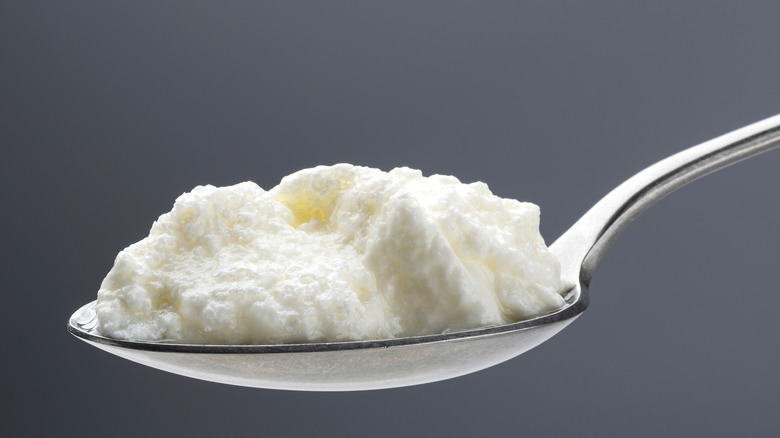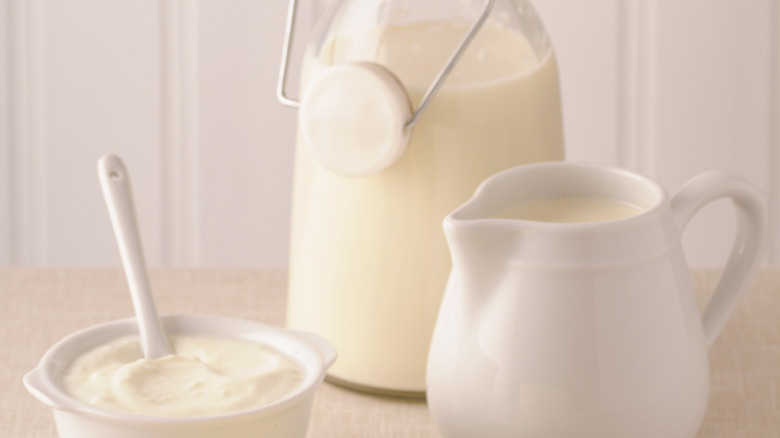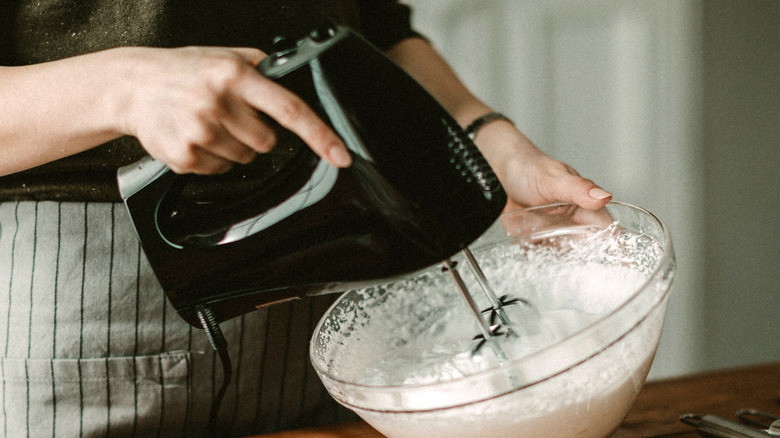The Science Behind Why Cream Curdles
Working with cream is the secret to the most decadent sauces and the perfect whipped cream topping, but it can be challenging to work with. The biggest hurdle to overcome is when cream curdles. Those large chunks of solidified cream are a nightmarish sight when making a hollandaise sauce. The first step in preventing it from ever happening again is to understand why cream curdles in the first place.
The simple answer for why cream curdles is that you've overworked the proteins present in the cream. The actual answer is much more complicated.
Proteins are a complex chain of molecule groups known as amino acids. When they're stable, they're a tightly wound grouping of these molecules. In the process of cooking, various things can denature proteins, meaning that the chains of amino acids are broken apart. When this occurs, those chains will link to other denatured proteins and form protein solids that we encounter as curds.
What causes cream to curdle
Curdling is caused by denaturing proteins, but there are a few different scenarios that can cause this to happen while cooking. High temperatures, high acidity, and too much salt can all cause your cream to curdle.
One interesting example is when cream curdles upon being added to coffee. In this scenario, a few things are often occurring. This often happens when cream is older and the bacteria inside has started turning sugars to lactic acid. This acid starts the process of curdling, but when it is added to a warm and highly acidic beverage like coffee, that process gets a jump start. The proteins quickly denature and bond together in this environment, and you're left with curds in your coffee.
To avoid curdling when cooking, it's best to use cream with care. It's usually smart to add cream at the very end of preparation for any sauces. This way, any acids have time to reduce while they cook, and the sauce can come off the heat before the cream is added. This will ensure that your cream isn't exposed to high heat or acidity that would normally cause it to curdle, and hopefully save your sauce. It's also best to work with fresh cream that hasn't had time to start curdling on its own, as in the case of the coffee.
The unique case of whipped cream
While curdling is due to denatured proteins, broken whipped cream is actually caused by the other major element in cream — fat. The secret to perfect whipped cream is taking your time. That's because while you're whipping that cream, the fat molecules are breaking down and reforming around pockets of air.
It can take some time for this process to occur, but once it does you only have a small window of time where it will add volume to your cream, and you'll have a solid structure. Go too far, and you'll end up with something that looks like it's curdling, but instead of the bonded proteins you're looking at dense formations of fat.
Luckily, you can easily revitalize your overly whipped cream by adding small splashes of cream and whipping it more gently. This will help some of those structures reform. Otherwise, it's best to just continue whipping until you've got some nice homemade butter to enjoy.


